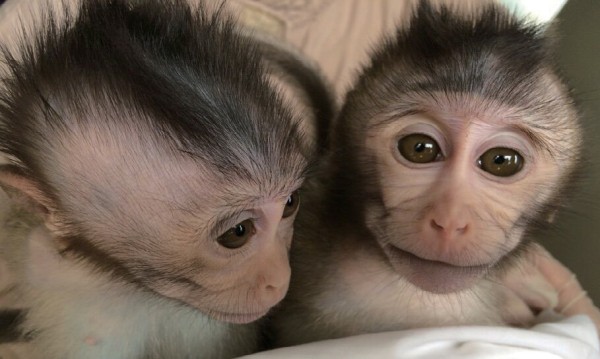While scientists in China have used genetic engineering to create monkeys with a version of autism, an achievement that could make it easier to test treatments, there are practical and ethical concerns over the usefulness of such animal models.
Zilong Qiu, a neuroscientist from Shanghai Institute for Biological Sciences, revealed that his team has created over one dozen monkeys with a genetic error that in human children causes a rare syndrome. The syndrome has symptoms like mental retardation and autistic features, including repetitive speech and restricted interests.
According to Technology Review, autism is any of a collection of intellectual and behavioral disorders recognized in about one in 68 children in the United States.
The genetically created monkeys portrayed shared psychiatric symptoms like pacing in circles and reduced interaction with other monkeys. The monkeys became easily stressed when researchers stared them in the eyes.
Furthermore, the monkeys could grunt, coo and scream more frequently if challenged in such a way, and two became very sick in ways that mirrored the problems experienced in human children with the defect.
During a conference call organized by Nature, Qiu said: "The monkeys show very similar behavior [to] human autism patients. We think it provides a very unique model."
Since monkeys have the same brains as human beings, the genetically engineered monkeys would help scientists study the forms of brain networks disrupted, and test treatments like deep-brain stimulation. Qiu's team would also try to reverse the symptoms created by erasing the genetic error in live animals. The process could occur through new genome-editing technologies like CRISPR.
Although there have been previous reports about genetically altered monkeys, including at least one animal in China with a defect in an autism gene, Qiu's report is the first time that researchers have created enough animals to observe stereotypical behavior changes.
On the other hand, some scientists raised concerns whether the model developed in China was close enough to autism to shed any light on human disorder.
Huda Zoghbi, whose lab at the Baylor College of Medicine found out in 1999 that destruction to the MECP2 gene causes Rett syndrome, a type of autism affecting girls, said, "I think we need to be cautious calling this a model . . . it does not quite accomplish that."
While the monkeys displayed common characteristics such as circling in their cages, Zoghbi pointed out that the behaviors are not synonymous to those exhibited in human children, another report from the same publication noted. The monkeys did not show typical symptoms like seizures.
"For the sake of the field and the families it is important that we study models that are constructed to genetically mimic what happens in humans and that reproduce features of the syndrome as closely as possible," she said, adding that it is important that to hold such standards to nonhuman primate models.


